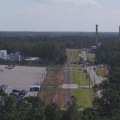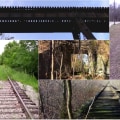Exploring the Origins: Tracing the History of Carmel, Indiana
Carmel, Indiana is a vibrant city located in Hamilton County, just north of Indianapolis. Known for its thriving community, excellent schools, and a wide range of recreational opportunities, Carmel has become a popular destination for residents and visitors alike. In order to truly appreciate the present, it is essential to delve into the rich history of this charming city. Let's explore the origins of Carmel and trace its fascinating journey over the years.
Early Settlement
The history of Carmel dates back to the early 19th century when it was initially settled by a group of Quakers from North Carolina. Led by George Boxley, these settlers established a small village known as Bethlehem. The Quakers played a significant role in shaping the community, introducing their principles of simplicity, peace, and equality. Over time, the settlement grew, attracting more residents and transforming into a bustling town.
Growth and Development
In the mid-1800s, the arrival of the Monon Railroad brought significant growth and economic prosperity to Carmel. The railroad facilitated the transportation of goods and people, connecting Carmel to other major cities in the region. This newfound accessibility contributed to the expansion of the town and spurred the development of businesses, schools, and other essential infrastructure.
The Birth of Carmel
In 1874, the town of Carmel was officially incorporated. The name "Carmel" was chosen as a reference to the Biblical mountain range of Carmel in Israel. With its new status as a town, Carmel experienced further advancements and improvements. The establishment of a town government provided the residents with a platform to address local issues, promote growth, and ensure a thriving community.
Transformation into a City
In 1976, Carmel underwent a significant transformation and was officially designated as a city. This transition marked a turning point in the history of Carmel, paving the way for comprehensive urban planning and development initiatives. The city's leadership, in collaboration with community members, embarked on a journey to create a vibrant and livable environment for its residents.
Urban Renewal and Redevelopment
Under the visionary leadership of Mayor James Brainard, Carmel embraced urban renewal and redevelopment projects that transformed the city's landscape. Strategic planning initiatives focused on creating a pedestrian-friendly city center, enhancing public spaces, and investing in cultural amenities. The Carmel Arts & Design District, with its numerous art galleries, restaurants, and shops, has become a thriving hub of creativity and commerce.
Parks and Recreation
Carmel is renowned for its commitment to providing exceptional recreational opportunities for its residents. The city boasts an impressive park system with over 200 parks and green spaces, offering a wide range of activities for all ages. From expansive sports fields and playgrounds to nature trails and community centers, Carmel's parks cater to the diverse interests of its residents and contribute to the city's high quality of life.
Education and Schools
Education has always been a priority in Carmel, and the city is home to top-notch schools that consistently rank among the best in the state. The Carmel Clay School District, comprising several elementary, middle, and high schools, provides students with excellent academic and extracurricular opportunities. The district's commitment to innovation and educational excellence has garnered national recognition and attracted families to the area.
Frequently Asked Questions (FAQ)
-
1. When was Carmel, Indiana founded?
Carmel was initially settled in the early 19th century and officially incorporated as a town in 1874.
-
2. What is the significance of the name "Carmel"?
The name "Carmel" was chosen as a reference to the Biblical mountain range of Carmel in Israel.
-
3. Who played a significant role in the early settlement of Carmel?
A group of Quakers from North Carolina led by George Boxley played a significant role in the early settlement of Carmel.
-
4. What initiatives have contributed to Carmel's urban renewal?
Carmel's urban renewal has been driven by initiatives such as the development of a pedestrian-friendly city center, investment in cultural amenities, and the creation of the Carmel Arts & Design District.
-
5. How many parks are there in Carmel?
Carmel boasts over 200 parks and green spaces, providing residents with a wide range of recreational opportunities.
Conclusion
Carmel, Indiana is a city with a rich history and a promising future. From its humble beginnings as a Quaker settlement to its present-day status as a thriving city, Carmel has undergone significant transformations over the years. The city's commitment to community, education, urban planning, and recreational amenities has created an environment that residents are proud to call home. By exploring the origins and tracing the history of Carmel, we gain a deeper appreciation for the city's unique character and the vision that has shaped it.


